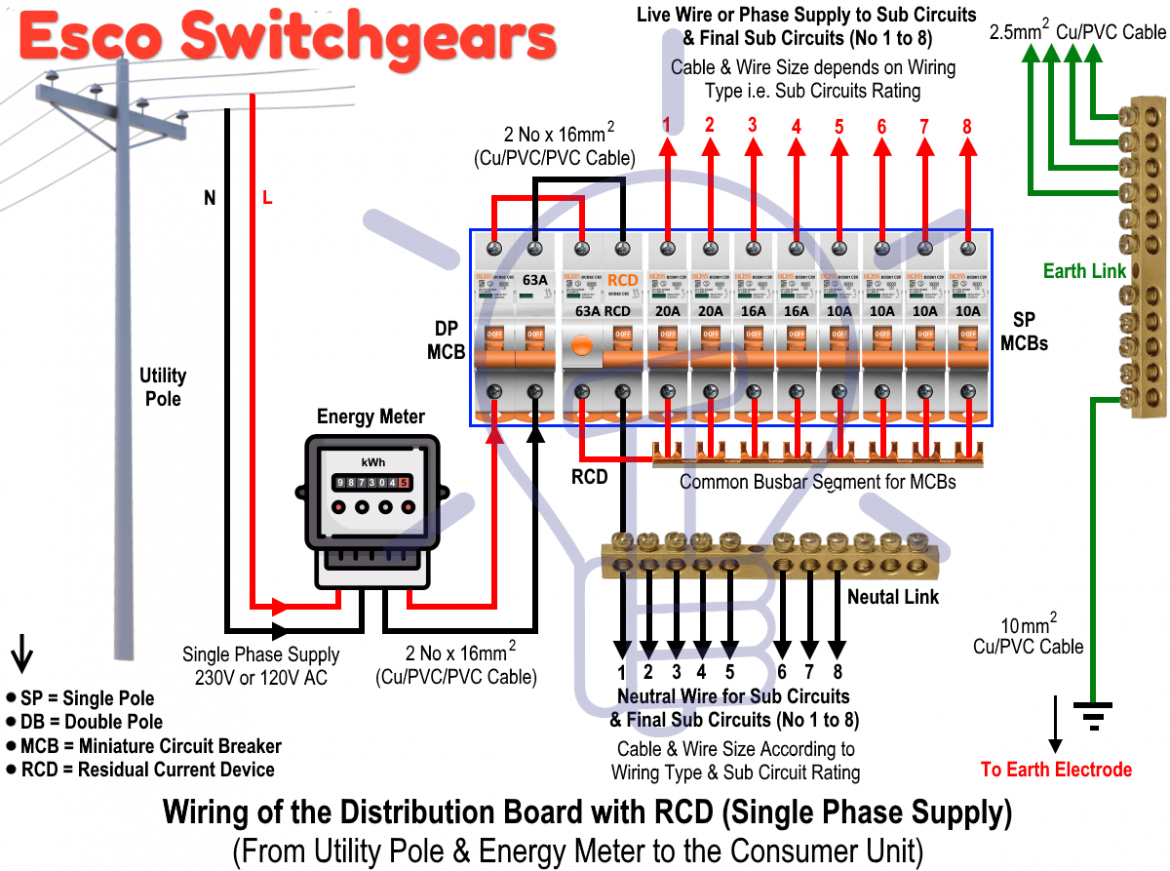
What is an MCB?
A smaller than usual electrical switch (MCB) consequently switches off electrical circuit during an anomalous state of the system implies in over-burden condition just as broken condition.
These days we utilize a MCB in low voltage electrical system rather than a breaker. The wire may not detect it but rather the smaller than expected electrical switch does it in an increasingly solid manner. MCB is substantially touchier to over current than wire.
Dealing with a MCB is electrically more secure than a circuit. Speedy reclamation of supply is conceivable if there should arise an occurrence of a wire as in light of the fact that circuits must be re-wirable or swapped for reestablishing the supply. Rebuilding is effectively conceivable by simply exchanging it ON. We should take a gander at the working of the smaller than expected electrical switch.
At whatever point ceaseless overcurrent moves through MCB, the bimetallic strip is warmed and diverts by bowing. This avoidance of bimetallic strip discharges a mechanical hook. As this mechanical lock is connected with the working system, it causes to open the smaller than usual electrical switch contacts, and the MCB turns off accordingly ceasing the flow to stream in the circuit. To restart the progression of current the MCB must be physically turned ON. This component shields from the issues emerging due to overcurrent or over-burden.
MCB Operation
On the off chance that the circuit is over-burden for quite a while, the bi-metallic strip ends up overheated and twisted. This disfigurement of Bi-metallic strip causes, relocation of hook point. The moving contact of the MCB is masterminded by methods for spring weight, with this lock point, that a little uprooting of hook causes, arrival of spring and reaches to move for opening the MCB.
The present curl or trek loop is set so that during short out flaw the magneto-rationale power (mmf) of the curl makes its plunger hit a similar lock point and make the hook to be uprooted. Once more, when working switch of the scaled down electrical switch is worked by hand, that implies when MCB goes off position physically, a similar hook point is uprooted thus moving contact isolated from fixed contact in a similar way.
It might be because of distortion of a bi-metallic strip, or expanded mmf of an excursion loop or perhaps a manual task, a similar hook point is uprooted and same twisted spring is discharged, which eventually in charge of development of the moving contact. At the point when the moving contact isolated from fixed contact, there might be a high shot of circular segment. This circular segment at that point goes up through the curve sprinter and enters bend splitters and is at long last extinguished. When we switch it on, we reset the dislodged working lock to its past on position and the MCB is prepared for another turn off or trip activity.



just a nice post
Quisque semper nunc vitae erat pellentesque, ac placerat arcu consectetur
Quisque orci nibh, porta vitae sagittis sit amet, vehicula vel mauris. Aenean at justo dolor. Fusce ac sapien bibendum, scelerisque libero nec